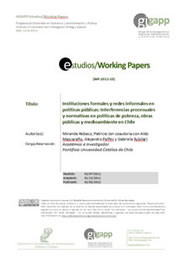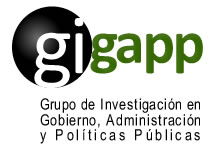Family and gender policies in Norway
Abstract
This paper discusses some of the central Norwegian gender and family policies adopted in the 1970s to the 2000s, but does not include the total range of public policies introduced in the field in the period. Our focus is on work/family policies and their articulation with gender equality considerations, especially in policies aimed at families with children under school age. this paper turns to a brief historical outline of some of the changes in Norwegian society important in setting the stage and framing the gender and family policies of the modern Norwegian Welfare State from the 1970s onwards. Next, we outline two waves of national gender and family policy reform, one starting in the 1970s, the other in the 1990s and continuing into the early 2000s. Special attention is paid to (i) turning points or ‘path breaks’ in legislation of family and gender policies, and (ii) the relationship of family change and policy reform. Thereafter the basic features of the gender and family policy field as per 2010 are briefly presented and discussed. In concluding, we point to some of the challenges facing the Nordic welfare model.
Downloads
References
Ahrne, G. and Roman, C. (1997) Hemmet, barnen och makten. SOU, 1997:193. Stockholm.
Aubert, V. (1990) ‘Family Law and Women’s Law: Historical Trends in Norwegian Legislation’. In Kurczewski, J. and Czynczyh, A. (eds) Family, Gender and Body in Law and Society Today.Warszawa: Institute of Applied Social Sciences.
Bay, A-H., Hatland, A., Hellevik, T, Koren, C. (2010) (eds) De norske trygdene. Oslo: Gyldendal Akademisk.
Barth, E. et al (2013) Lønnsforskjeller mellom kvinner og menn. Hva har skjedd på 2000-tallet. Oslo: ISF-rapport.
Becker, G.S. (1973) “A Theory of Marriage. Part I”, Journal of Political Economy, vol. 81 (4): 813-846.
Crompton, R. (2002) ‘Employment, Flexible Working and the Family’, British Journal of Sociology, 9 (2):537-558.
Dagsavisen (national newspaper) (2014, Aug. 19,p.6) ‘Høyre motarbeidet barnehageforliket’.
Duncan, S. and Edwards, R. (1999) Lone Mothers, Paid Work and Gendered Moral Rationalities. London: Macmillan.
Ellingsæter, A. L. (2003) ‘The complexity of family policy reform’. European Societies, 5 (4): 419-443.
Ellingsæter, A. L. and Leira, A. (2006) Politicising Parenthood in Scandinavia. Bristol: Policy Press.
Esping-Andersen, G. (1990) The Three Worlds of Welfare Capitalism. Cambridge: Polity Press.
Esping-Andersen, G. (1999) Social Foundations of Post-Industrial Economies. Oxford: Oxford University Press.
Esping-Andersen, G et al. (eds) (2002) Why We Need a New Welfare State. Oxford: Oxford University Press.
Gender Equality Council (1995) Milestones in 150 Years’ History of Norwegian Women. Oslo.
Grødem, A. S. (2010a) ‘Enslige forsørgere, enker og enkemenn’. In Bay, A-H., et al. (eds) (2010) De norske trygdene. Oslo: Gyldendal Akademisk.
Grødem, A. S. (2010b) ‘Barn og barnefamilier’. In Bay, A-H. et al (eds) (2010) De norske trygdene. Oslo: Gyldendal Akademisk.
Hakim, C. (1996) Preference Theory. Oxford: Oxford University Press.
Hardoy, I. & Schøne, P. (2008) ‘The family gap and family friendly policies: the case of Norway’, Applied Economics 40:2857-2871.
Hernes, H. M. (1987) Welfare States and Women Power. Oslo: Norwegian University Press.
Kangas, O. and J. Palme (2005) ‘Coming late – catching up: the formation of a 'Nordic model', in Social Policy and Economic Development in the Nordic Countries in O. Kangas and J. Palme (eds.) Chippenham and Eastbourne: Palgrave Macmillan.
Kitterød, R.H. and Rønsen, M. (2012) ‘Kvinner i arbeid hjemme og ute. Endring og ulikhet’. In Ellingsæter, A.L. and Widerberg, K. Velferdsstatens familier. Oslo: Gyldendal Akademisk. Leira A. (1992) Welfare States and Working Mothers. The Scandinavian Experience. Cambridge: Cambridge University Press.
Leira, A. (1998) ‘Caring as a Social Right: Cash for Child Care and Daddy Leave’, Social Politics, Fall: 362-78.
Leira, A. (2006) ‘Parenthood Change and Policy Reform in Scandinavia 1970s- 2000s’, in Ellingsæter, A. L. and Leira, A. (eds.) Politicising Parenthood in Scandinavia. Bristol: Policy Press.
Leira, A., Tobìo,C., Trifiletti. R. (2005) ‘Kinship and informal support: Care resources for the first generation of working mothers in Norway, Italy and Spain’. In Gerhard, Knijn, T, Weckwert, A. (eds) Working Mothers in Europe. Cheltenham: Edward Elgar.
Moene, K. (2011) ‘Flying High?’ In Molven.O. and J. Ferkis (eds.) Healthcare, Welfare and Law. Oslo: Gyldendal Akademisk.
Mærland, J. and Hatland, A. www.Snl. Lov om folketrygd (Accessed 28.06.14).
Nordic Council of Ministers (2011) The Nordic countries in figures 2011. Copenhagen.
Nordic Council of Ministers (2012) The Nordic Countries in figures 2012. Copenhagen.
Nordic Statistical Yearbook: 46, (2008). Copenhagen.
Nordic Statistical Yearbook (2011). Copenhagen.
NOSOSCO (54:2013) Challenges to the Nordic Welfare States – Comparable Indicators. Copenhagen.
NOSOSCO (56:2013) Social Protection in the Nordic Countries 2011/2012. Copenhagen.
NOU (1996: 13) Offentlige overføringer til barnefamiliene. Oslo.
NOU (2008: 6) Kjønn og lønn. Oslo.
NOU (2011:7) Innovasjon i omosorg. Oslo.
NOU (2011:18) Struktur for likestilling. Oslo.
NOU (2012: 1) Til barnas beste. Oslo.
NOU( 2012:15) Politikk for likestilling. Oslo.
NSD-nytt (2010,1) ‘Høye forventninger til offentlig velferd’, (p.4).
NSD (2011) www.nsd.uib.no/velferd/kontantstotte (Accessed 12 January 2011).
OECD (2011) Family Database.Country Snapshots 2009. Paris.
Saraceno, C. and Keck, W. (2010) ‘Can we identify intergenerational policy regimes in Europe?’ European Societies, vol. 12, 5, 675-696.
Seip, A.L. (1994) Veiene til velferdsstaten. Oslo: Gyldendal.
Sipilä, J (1997) ‘Introduction’ in Sipilä, J. (ed) Social Care Services: The Key to the Scandinavian Model. Aldershot: Ashgate.
St.meld. 4,1988-89. Langtidsprogrammet. (The Long-term Program) Oslo.
Titmuss, R. M. (1974) Social Policy. London:George Allen& Unwin.
Vollset, G. (2011) Familiepolitikk (Oslo: NOVA-rapport).
Copyright (c) 2017 Leira Arnlaug

This work is licensed under a Creative Commons Attribution-NonCommercial-ShareAlike 4.0 International License.
Those authors who have publications with this journal, accept the following terms:
a. Authors will retain their copyrights and guarantee the journal the right of first publication of their work, which will be simultaneously subject to the Creative Commons Attribution-NonCommercial-ShareAlike 4.0 International (CC BY-NC-SA Recognition License). 4.0) that allows third parties to share the work as long as its author and its first publication are indicated in this journal.
Under this open access license, readers (users) can:
- Share — copy and redistribute the material in any medium or format
- Adapt — remix, transform, and build upon the material
Under the following terms:
-
Attribution — Users must give appropriate credit, provide a link to the license, and indicate if changes were made. You may do so in any reasonable manner, but not in any way that suggests the licensor endorses you or your use.
-
NonCommercial — Users may not use the material for commercial purposes.
-
ShareAlike — If remix, transform, or build upon the material, users must distribute your contributions under the same license as the original.
- No additional restrictions — Users may not apply legal terms or technological measures that legally restrict others from doing anything the license permits.
b. Authors may adopt other non-exclusive license agreements for the distribution of the version of the published work (eg: deposit it in an institutional telematic archive or publish it in a monographic volume) provided that the initial publication in this journal is indicated.
c. Authors are allowed and recommended to disseminate their work through the Internet (e.g. in institutional telematic files or on their website) before and during the submission process, which can lead to interesting exchanges and increase citations of the published work. (See The effects of open access).



